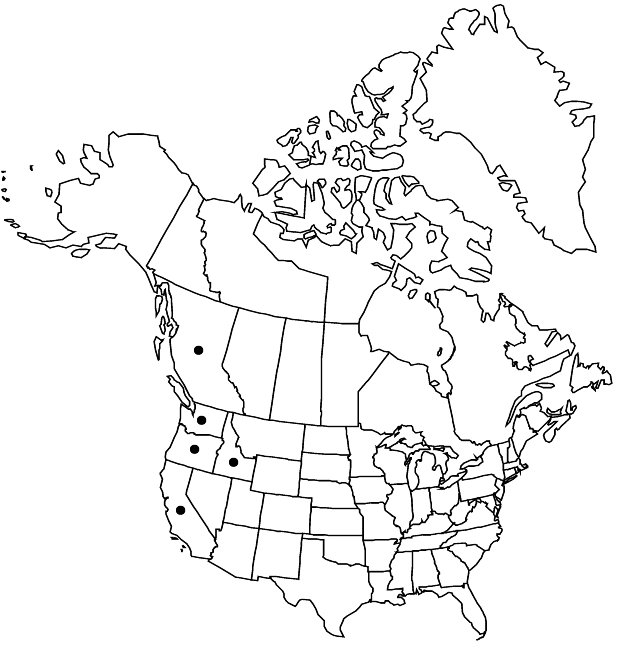Difference between revisions of "Ribes sanguineum"
Fl. Amer. Sept. 1: 164. 1813 ,.
FNA>Volume Importer |
FNA>Volume Importer |
(No difference)
| |
Revision as of 20:28, 24 September 2019
Plants 1–4 m. Stems erect, finely pubescent, stipitate-glandular; spines at nodes absent; prickles on internodes absent. Leaves: petiole 2–7 cm, puberulent, short stipitate-glandular; blade broadly reniform or cordate-orbiculate to deltate-ovate, nearly equally to irregularly 5-lobed, cleft nearly 1/4 to midrib, 2–7 cm, base subtruncate to cordate, surfaces puberulent to whitish-tomentose abaxially, puberulent adaxially or puberulent and colorless, sessile-glandular on both surfaces, lobes deltate to obtuse, margins finely 2–3 times crenate and denticulate or serrate, apex broadly acute. Inflorescences pendent to stiffly spreading or ascending or erect, 5–40-flowered racemes, 5–15 cm, axis crisped-pubescent and stipitate-glandular, flowers evenly spaced. Pedicels jointed, 5–10 mm, pubescent, stipitate-glandular; bracts oblanceolate or lanceolate, 2–12 mm, with scattered, short hairs and stalked glands. Flowers: hypanthium white, pink, rose, or red, tubular to campanulate, 3–7 mm, pubescent, stipitate-glandular; sepals not overlapping, spreading or reflexed, white, pink, or red, ovate-elliptic or oblong to oblanceolate or lanceolate, 4–5 mm; petals not or nearly connivent to connivent, erect, white or pink to red, obovate-spatulate to oblong or almost square, not conspicuously revolute or inrolled, 1–3.5 mm; nectary disc not prominent; stamens shorter than to as long as petals; filaments linear or slightly expanded at base, 1.2–2 mm, glabrous; anthers cream, oblong-oval, 0.5–0.8 mm, apex shallowly notched; ovary stipitate-glandular to strongly stipitate-glandular and crisped-puberulent; styles connate nearly to stigmas, 4–6 mm, glabrous or with scattered, stipitate glands at base. Berries palatable but insipid, blue-black, glaucous, ovoid or globose, 3–9(–10) mm, yellowish or greenish stipitate-glandular. 2n = 16.
Distribution

nw North America, introduced in c Europe.
Discussion
Varieties 2 (2 in the flora).
Ribes sanguineum is widely cultivated. It begins to bloom very early in the season, providing a nectar source for pollinators when little else is available.
Selected References
None.
Key
| 1 | Racemes 5-15(-20)-flowered, erect to stiffly spreading or ascending; sepals red. | Ribes sanguineum var. sanguineum |
| 1 | Racemes 15-40-flowered, pendent; sepals pink to white. | Ribes sanguineum var. glutinosum |